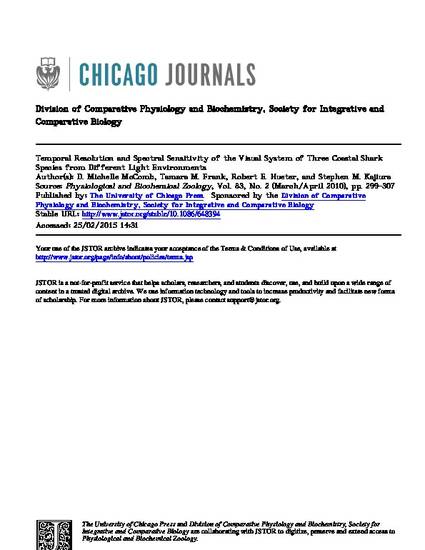
Visual temporal resolution and scotopic spectral sensitivity of three coastal shark species (bonnethead Sphyrna tiburo, scalloped hammerhead Sphyrna lewini, and blacknose shark Carcharhinus acronotus) were investigated by electroretinogram. Temporal resolution was quantified under photopic and scotopic conditions using response waveform dynamics and maximum critical flicker‐fusion frequency (CFF). Photopic CFFmax was significantly higher than scotopic CFFmax in all species. The bonnethead had the shortest photoreceptor response latency time (23.5 ms) and the highest CFFmax (31 Hz), suggesting that its eyes are adapted for a bright photic environment. In contrast, the blacknose had the longest response latency time (34.8 ms) and lowest CFFmax (16 Hz), indicating its eyes are adapted for a dimmer environment or nocturnal lifestyle. Scotopic spectral sensitivity revealed maximum peaks (480 nm) in the bonnethead and blacknose sharks that correlated with environmental spectra measured during twilight, which is a biologically relevant period of heightened predation.
Available at: http://works.bepress.com/tamara-frank/40/

©2010 by The University of Chicago
Cover Story